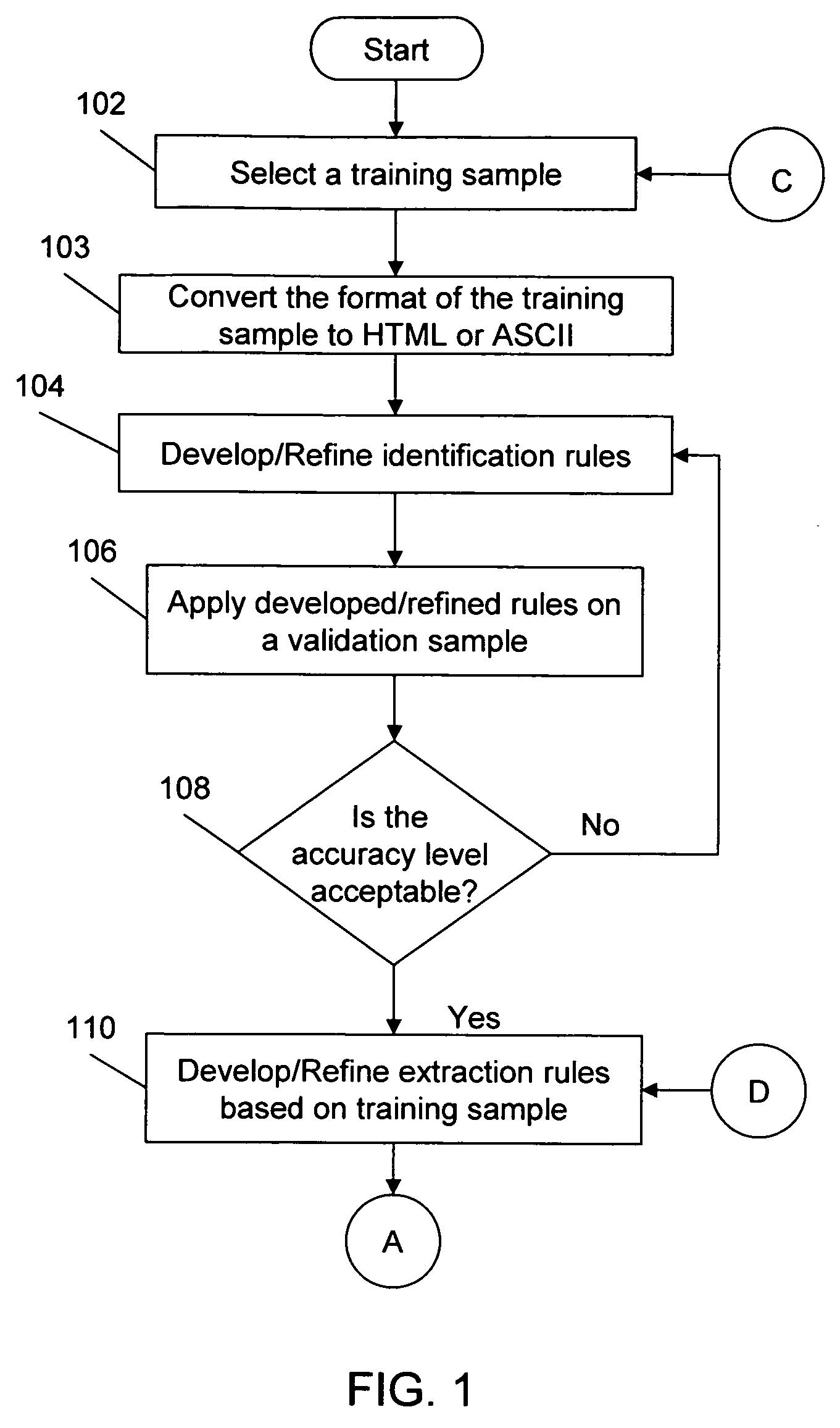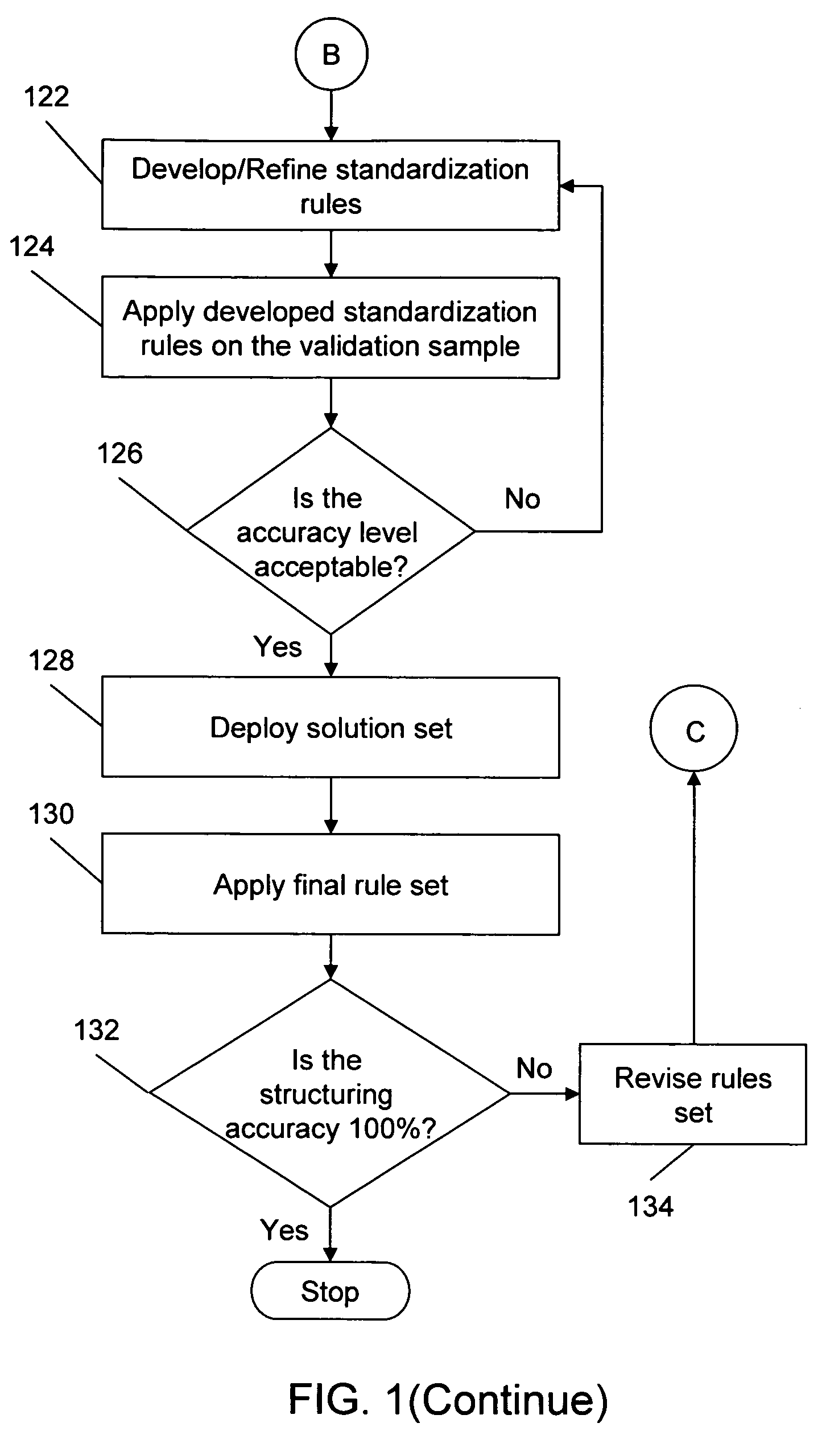Method for extracting, interpreting and standardizing tabular data from unstructured documents
a tabular data and document technology, applied in the field of tabular data management, can solve the problems of not providing parsing and interpreting the data contained in the identified tables, not facilitating standardization of tabular data contained in similar documents, and limiting the use of the above-mentioned methods, so as to eliminate manual efforts
- Summary
- Abstract
- Description
- Claims
- Application Information
AI Technical Summary
Benefits of technology
Problems solved by technology
Method used
Image
Examples
Embodiment Construction
1. Overview
[0047]The present invention provides a method, system and computer program to automate the identification, parsing, and interpretation of tabular data from unstructured documents stored in various formats, such as ASCII text, Unicode text, HTML, PDF text, and PDF image. As opposed to the current practice of manually re-entering such data into a structured format such as an RDBMS, the current invention provides a method, a system and a computer program product that eliminates the manual effort by automating the process of structuring the data.
[0048]In the current invention, a set of identification rules, parsing / tokenizing rules, interpretation / mapping rules, and standardizing rules are first developed, as required. Referring primarily to FIG. 1, in accordance with an embodiment of the present invention, the process of developing rules for the automation of the structuring of tabular data, and its lifecycle, begins with the task of converting the document into a format tha...
PUM
 Login to View More
Login to View More Abstract
Description
Claims
Application Information
 Login to View More
Login to View More - R&D
- Intellectual Property
- Life Sciences
- Materials
- Tech Scout
- Unparalleled Data Quality
- Higher Quality Content
- 60% Fewer Hallucinations
Browse by: Latest US Patents, China's latest patents, Technical Efficacy Thesaurus, Application Domain, Technology Topic, Popular Technical Reports.
© 2025 PatSnap. All rights reserved.Legal|Privacy policy|Modern Slavery Act Transparency Statement|Sitemap|About US| Contact US: help@patsnap.com



